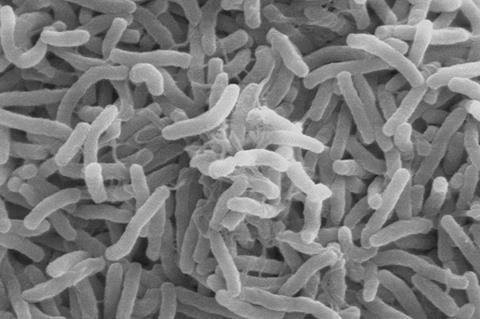Experts have used a cutting-edge computational approach to discover the genetic factors that make the bacteria behind cholera so dangerous - which could be key to preventing this deadly disease.

The breakthrough study, published in Nature Communications, is led by Professor Tania Dottorini from the University of Nottingham, in collaboration with Bangladesh’s Institute of Epidemiology, Disease Control and Research (IEDCR), International Centre for Diarrhoeal Disease Research, Bangladesh, and North South University.
READ MORE: WHO: Cholera surges as response efforts hit by critical shortage of Oral Cholera Vaccines
READ MORE: Newly discovered antimicrobial could prevent or treat cholera
The innovative research combines machine learning, genomics, genome-scale metabolic modelling (GSMM), and 3D structural analysis to uncover the genetic secrets of Vibrio cholerae – the bacteria behind cholera.
Vibrio cholerae evolving to cause more severe disease
Cholera is a deadly diarrheal disease, that continues to threaten millions worldwide, with up to 4 million cases and as many as 143,000 deaths each year. In Bangladesh alone, where cholera is a persistent danger, 66 million people are at risk, with over 100,000 cases and 4,500 deaths annually.
Vibrio cholerae, is evolving in ways that make the disease more severe and harder to control, but until now, scientists have struggled to pinpoint the exact genetic factors driving these changes. There is even less knowledge about the genomic traits responsible for the severity of cholera resulting from these lineages. About 1 in 5 people with cholera will experience a severe condition owing to a combination of symptoms (primarily diarrhoea, vomiting, and dehydration).
In this new study, the UK-Bangladeshi research team analysed bacterial samples from cholera patients across six regions in Bangladesh, collected between 2015 and 2021. They identified a set of unique genes and mutations in the most recent and dominant strain of Vibrio cholerae responsible for the devastating 2022 outbreak. These genetic traits are linked to the bacteria’s ability to cause severe symptoms like prolonged diarrhoea, intense abdominal pain, vomiting, and dehydration—symptoms that can lead to death in severe cases.
Professor Dottorini said: “By identifying the key genetic factors that drive both the transmission and severity of cholera, we’ve taken a significant step toward developing more effective treatments and targeted interventions. This could save thousands of lives, not just in Bangladesh, but globally.”
Computational framework to aid fight against cholera
The findings of the study also revealed that some of these disease-causing traits overlap with those that help the bacteria spread more easily. The findings show how these genetic factors enable Vibrio cholerae to survive in the human gut, making it more resilient to environmental stress and more efficient at causing disease. This research highlights the complex interactions between the bacteria’s genetic makeup and its ability to cause severe illness.
This new computational framework is a major step forward in the fight against cholera. By identifying the key genetic factors that make Vibrio cholerae more dangerous, scientists can develop better treatments and more targeted strategies to control and prevent future outbreaks. This breakthrough offers new hope for improving public health in Bangladesh and potentially saving countless lives worldwide.
Dr Dottorini adds: “Our findings open the door to a new era of cholera research, where we can develop tools to predict and potentially prevent severe outbreaks before they occur. The ultimate goal is to translate these insights into real-world solutions that protect vulnerable populations.
“This breakthrough was only possible through the close collaboration between our UK and Bangladeshi partners. Together, we’ve combined cutting-edge computational tools with local expertise to tackle one of the most pressing public health challenges.”
Topics
- 3D structural analysis
- Asia & Oceania
- Bacteria
- Bangladesh
- cholera
- Clean Water
- genome-scale metabolic model
- genomics
- Institute of Epidemiology, Disease control and Research (IEDCR), Bangladesh
- International Centre for Diarrhoeal Disease Research, Bangladesh
- machine learning
- North South University
- One Health
- Research News
- Tania Dottorini
- UK & Rest of Europe
- University of Nottingham
- Vibrio cholerae







No comments yet